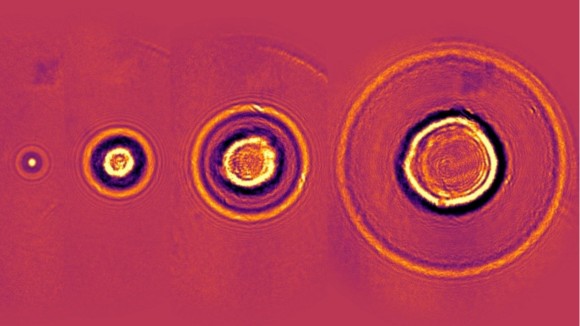
Free-electron laser (FEL) sources can generate tunable short-wavelength coherent pulses that can be used for studying structure and dynamics of matter in different forms. In this open collection, we aim to publish articles in multidisciplinary areas dedicated to the recent development of FEL sources and their applications. This collection will feature technical and instrumental progress in the generation of FEL pulses at higher repetition rates and their spectral and temporal characterization. We also welcome submissions describing applications of FELs to time-resolved interactions, dynamics, spectroscopy, imaging, crystallography of matter, structural biology, and biophysics.

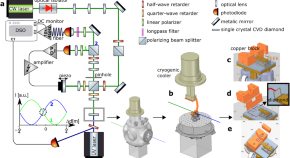
While MHz repetition rates at modern X-ray free-electron laser (XFEL) facilities achieve remarkable capabilities for imaging, the high repetition rates may also lead to new stability problems. The authors experimentally demonstrate that thermoelastic displacements between successive pulses can be detrimental to the performance of cavity-based XFEL
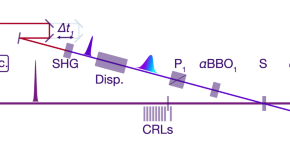
In time-resolved measurements it is crucial to know the time delay between the exciting and probing light pulses. Here the authors demonstrate a self-referencing common-path interferometer method measuring the arrival time between the X-ray free electron laser and the optical pulse to the target and thus their inherent timing jitter.
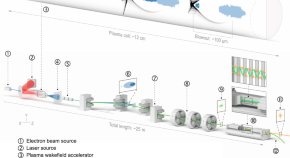
Free-electron lasers (FELs) can produce bright X-ray pulses, but require high quality electron beams. Here the authors show how to generate and preserve ultrabright electron beams from plasma-based accelerators for ultra-compact, high-brightness X-ray FELs.
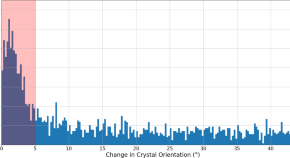
Free-electron lasers are capable of high repetition rates and it is assumed that protein crystals often do not survive the first X-ray pulse. Here the authors address these issues with a demonstration of multi-hit serial crystallography in which multiple FEL pulses interact with the sample without destroying it.
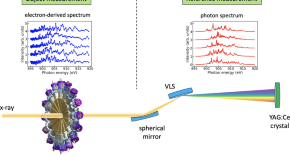
X-ray free-electron lasers (XFELs) are powerful tools to explore x-ray interactions in atomic and molecular systems at femtosecond timescales. The authors demonstrate a transparent beamsplitter that uses photoelectron spectroscopy combined with a ghost-imaging algorithm to characterize the spiky spectral structure of individual XFEL pulses.
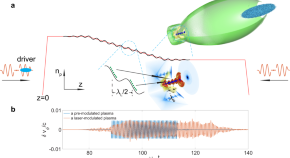
Laser-produced plasma can be used for acceleration and tuning of particle beams. Here the authors discuss the generation of a bunched electron beam using simulations and its application to X-ray free-electron laser.
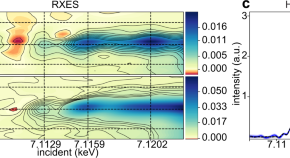
X-ray absorption and X-ray free electron lasers are important tools to study chemical and structural dynamics, but spectral details like pre-edge features are inherently hard to detect. Here, the authors show that stochastic spectroscopy can yield similar spectral information to monochromatic spectroscopies, while increasing signal yield and reducing acquisition time.
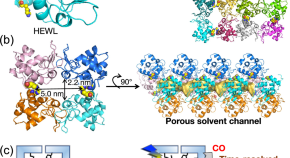
Here the authors demonstrate the use of time-resolved serial femtosecond crystallography to capture intermediates in a chemical reaction in synthetic CO-releasing Mn-carbonyl complex fixed in lysozyme protein crystals, providing useful insights for the design of artificial metalloenzyme reactions.
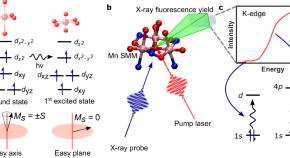
The authors use femtosecond K-edge X-ray absorption spectroscopy to follow nuclear motion in a manganese-based tri-nuclear single-molecule magnet, and resolve changes in bond lengths on the order of hundreds of ångströms and on sub-picosecond timescales.
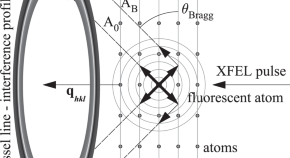
X-ray Free Electron Lasers allow fast structure determination. Here, the authors push the temporal limit of atomic level structure determination to 25 fs, the length of a single pulse, paving the way to the study of fast, non-repeatable processes.
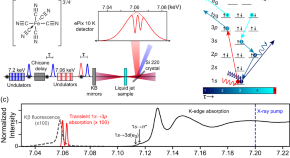
Pump-probe spectroscopy is routinely used to interrogate ultrafast valence electronic and vibrational dynamics in complex systems. Here, the authors extend this technique to the X-ray regime using a sequence of femtosecond X-ray pulses to understand core-valence interactions in a solvated molecular complex.
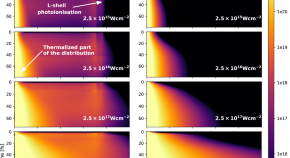
X-ray free-electron lasers enable a range of new experimental investigations into the properties of matter driven to extreme conditions via intense x-ray-matter interaction. The proposed numerical method enables a quantitative investigation of transient high-energy-density plasmas driven by XFELs in femtosecond timescales even when both electrons and ions are far from local thermodynamic equilibrium.

Reliably identifying transient intermediates is crucial to elucidate chemical reaction mechanisms. Here, the authors use femtosecond Fe Kβ main line and valence-to-core x-ray emission spectroscopy to characterize a short-lived intermediate of the aqueous ferricyanide photo-aquation reaction.
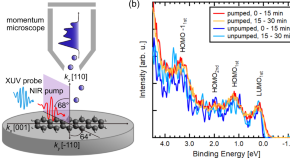
Ultrafast pulses are useful to investigate the electron dynamics in excited atoms, molecules and other complex systems. Here, the authors measure transient photoelectron momentum maps following the free-electron laser pulse-induced ionization of a bilayer pentacene thin film on Ag (110) by using time-resolved orbital tomography.
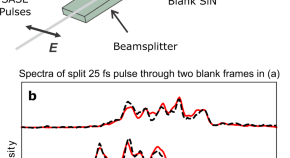
X-ray free electron lasers provide brilliant light with sufficient intensity to strongly drive and probe nonlinear X-ray-matter interactions. Here, spectroscopy of Co/Pd multilayers reveals a nearly one-million-fold enhancement of stimulated resonant inelastic X-ray scattering versus conventional, spontaneous scattering.
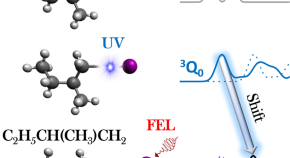
Coincidence experiments at free-electron lasers enable time resolved site-specific investigations of molecular photochemistry at high signal rates, but isolating individual dissociation processes still poses a considerable technical challenge. Here, the authors use electron-ion partial covariance imaging to isolate otherwise elusive chemical shifts in UV-induced photofragmentation pathways of the prototypical chiral molecule 1-iodo-2-methylbutane.
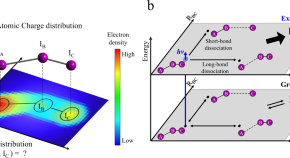
Tracking the flow of charge in reacting molecules may provide key insight into reaction mechanisms, but is particularly challenging in liquid solutions. Here the authors, by analyzing the isotropic and anisotropic scattering signal in femtosecond time resolved X-ray liquidography, determine the charge localization and structural changes during photodissociation of the triiodide anion I3 -
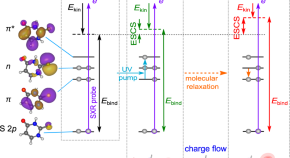
Imaging the charge flow in photoexcited molecules would provide key information on photophysical and photochemical processes. Here the authors demonstrate tracking in real time after photoexcitation the change in charge density at a specific site of 2-thiouracil using time-resolved X-ray photoelectron spectroscopy.
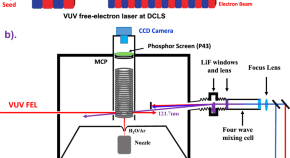
Understanding the source of vibrationally excited molecular hydrogen is an essential prerequisite for understanding the chemical evolution in the universe. Here the authors report a photodissociation pathway to produce vibrationally excited H2 via the water photochemistry.
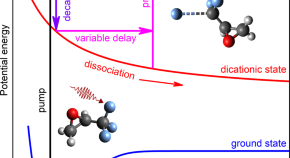
Ultrashort circularly polarised light pulses from free-electron lasers offer a route for exploring chiral molecules and their dynamics, but remain challenging to harness. Here, X-ray pump-probe experiments enable a site-specific photoelectron circular dichroism measurement on a dissociating chiral molecule.
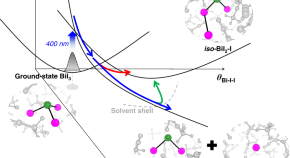
The roaming reaction is a common process in the gas phase and in solution, but observation of the involved atomic movements has been challenging. The authors, using femtosecond time-resolved X-ray liquidography, resolve the detailed structural dynamics at the onset of a roaming reaction in the photoinduced isomerization of BiI3 in solution.
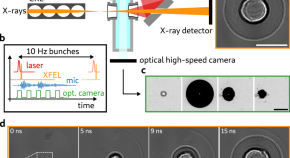
Cavitation bubbles show many nonlinear characteristics of liquid and gas phase. Here the authors demonstrate coherent diffractive imaging of cavitation bubble using infrared pump and XFEL probe and discuss the formation and evolution of the bubbles.
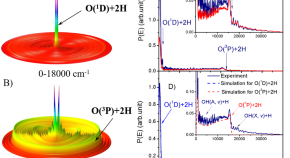
Three-body dissociation of water, producing one oxygen and two hydrogen atoms, has been difficult to investigate due to the lack of intense vacuum ultraviolet sources. Here, using a tunable free-electron laser, the authors obtain quantum yields for this channel showing that it is a possible route to prebiotic oxygen formation in interstellar environments.
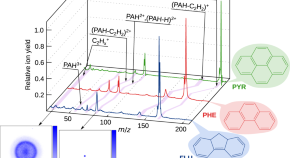
Polycyclic aromatic hydrocarbons play an important role in interstellar chemistry, where interaction with high energy photons can induce ionization and fragmentation reactions. Here the authors, with XUV-IR pump-probe experiments, investigate the ultrafast photoinduced dynamics of fluorene, phenanthrene and pyrene, providing insight into their preferred reaction channels.
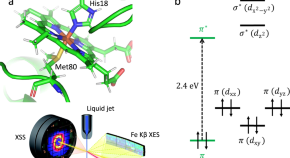
The dissociation mechanism of the heme axial ligand in heme proteins is not yet fully understood. The authors investigate the photodissociation dynamics of the bond between heme Fe and methionine S in ferrous cytochrome c using femtosecond time-resolved X-ray solution scattering and X-ray emission spectroscopy, simultaneously tracking electronic and nuclear structure changes.
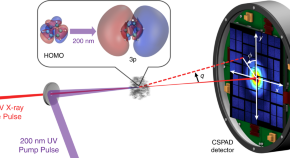
Photoabsorption is a fundamental process that leads to changes in the electron density in matter. Here, the authors show a direct measurement of the distribution of electron density when a cyclohexadine molecule is excited by pulsed UV radiation and probed by a time delayed X-ray pulse generated at LCLS.
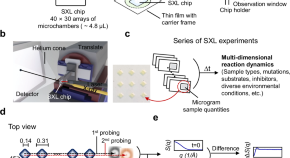
Here, the authors present a time-resolved method that overcomes inefficient sample use termed Serial X-ray liquidography, which enables microgram-scale analysis of diverse biological reactions yielding structural and kinetic insights.
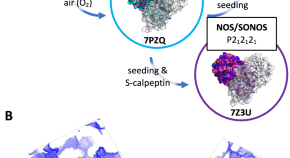
The main protease, a key enzyme of SARS-CoV-2, can protect itself from oxidative damage. Here, Reinke, Schubert, and colleagues used XFEL radiation to image the enzyme, revealing the disulfide and NOS/SONOS bonds that form in response to oxygen.
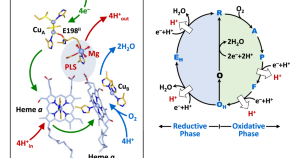
Using resonance Raman spectroscopy and serial femtosecond X-ray crystallography, the authors show the heme a3 iron and CuB in the resting oxidized form of Cytochrome c Oxidase are coordinated by a hydroxide ion and a water molecule, respectively.

Here, the reaction of the suicide inhibitor sulbactam with the M. tuberculosis β-lactamase (BlaC) is investigated with time-resolved crystallography. Singular Value Decomposition is implemented to extract kinetic information despite changes in unit cell parameters during the time-course of the reaction.

Photopharmacology manipulates the biological activity of small molecules by light. Using an X-ray laser, the authors follow the release of the drug azo-combretastatin A4 from tubulin and the concomitant structural changes over nine orders of magnitude in time.

Free-electron lasers are capable of high repetition rates and it is assumed that protein crystals often do not survive the first X-ray pulse. Here the authors address these issues with a demonstration of multi-hit serial crystallography in which multiple FEL pulses interact with the sample without destroying it.
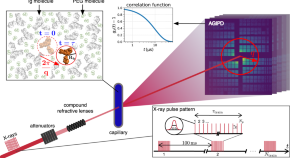
The European X-ray FreeElectron Laser Facility generates ultrashort hard X-ray pulses with megahertz repetition rate. Here, the authors probe the dynamics of dense antibody protein (Ig-PEG) solutions using megahertz X-ray photon correlation spectroscopy at the European XFEL.

The local X-ray-induced dynamics that occur in protein crystals during serial femtosecond crystallography (SFX) measurements at XFELs are not well understood. Here the authors performed a time-resolved X-ray pump X-ray probe SFX experiment, and they observe distinct structural changes in the disulfide bridges and peptide backbone of proteins; complementing theoretical approaches allow them to further characterize the details of the X-ray induced ionization and local structural dynamics.

The phase transition between water and ice is a ubiquitous phenomenon in nature. Here, the authors conduct a time-resolved x-ray scattering experiment using X-ray Free Electron Lasers to elucidate a comprehensive picture of the melting and recrystallization dynamics of crystalline ice, based on direct structural information.
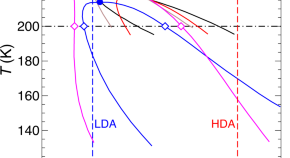
Obtaining experimental evidence of a liquid-liquid phase transition in supercooled water is challenging due to the rapid crystallization. Here the authors drive low-density amorphous ice to the conditions of liquid-liquid coexistence using ultrafast laser heating and observe the liquid-liquid phase transition with femtosecond x-ray laser pulses.
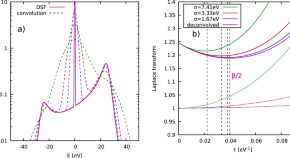
Existing methods for temperature estimation of warm dense matter rely on model calculations. Here the authors report a method to extract the temperature of complex materials that is previously only inferred by using model calculations.

Shock-wave driven reactions of organic molecules may have played a key role in prebiotic chemistry, but their mechanisms are difficult to investigate. The authors, using time-resolved x-ray diffraction and small-angle x-ray scattering experiments, observe the transformation of liquid benzene during a shock, identifying carbon and hydrocarbon solid products.